Jean-Pierre Robinot Uncorked Vol. 1
Abstract labes and distinctive wines full of charm.
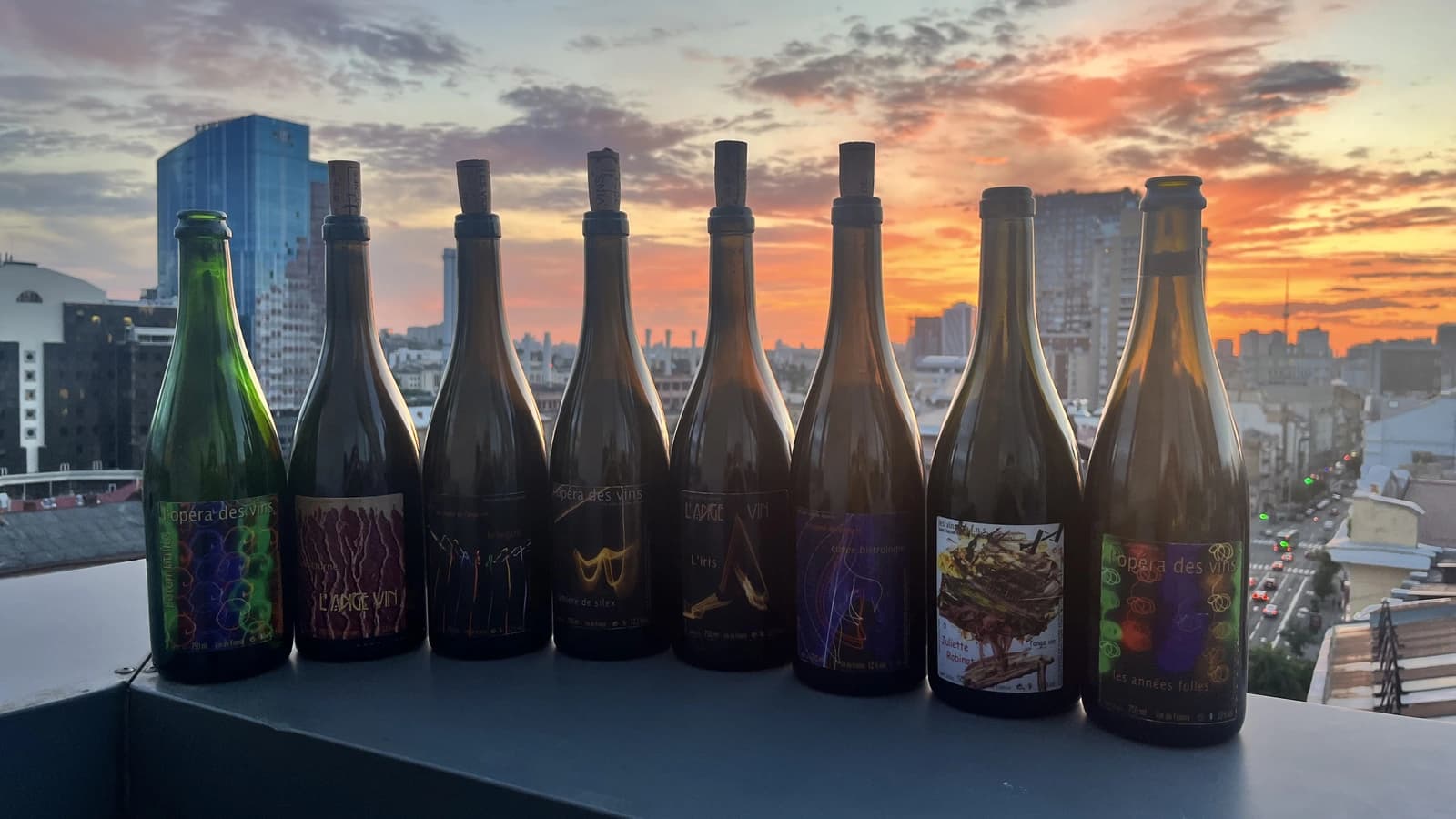
Once you are caught by the living, you can't go back.
— Jean-Pierre Robinot w/ Irish Baklava Fan
First, he tends the vineyards on a tractor, and then he gets into his red Coste, a replica of the Ferrari 330 P4 from 1967, to drive around the area. This is Jean-Pierre Robinot in life – breaking free from his native village in Chahaignes, moving to Paris where he worked as a plumber, opening a wine bar, starting a wine magazine, and then leaving it all to return to his homeland in his fifties to make his own wine – the only way he believes to truly understand this form of art. People say that Jean-Pierre sparks the magic of life and joy. As he says himself, "If a winemaker doesn't cheat, he gives a signature to the wine." So opening his wines is probably one of the best ways to get to know this legendary person while staying in Kyiv.
Art is the most acceptable form of self-reduction. And although I don't like to reduce a grand human life filled with endless moments to a few words, it's probably worth sharing at least a few facts. Let's say, to recreate some chronology and have the context of wine creation.
So, a 17-year-old boy runs away to Paris and works as a plumber for nearly 20 years. But somewhere between 22-25 years old, he truly falls in love with wine. Sometimes on the internet, they say it happened thanks to a 1964 bottle of Cheval Blanc. So, in the following years, Jean-Pierre was immersed in conventional wines (as they are now called). But everything changes when, in the 80s, he encounters the wines of Marcel Lapierre. In 1983, he started the magazine "Le Rouge et le Blanc." Friends and people around him start opening natural wine bars, and at some point, Jean-Pierre decides to quit his profession to join this parade of natural bars. Thus, L'Angevin, The Angel Wine, appears.
He laughs that although natural wine lovers existed at that time, there were still enough visitors and critics who considered him and his friends mentally deranged. And to all the claims that natural wine is just a fashion, Jean-Pierre waved them off and said, "Once you are caught by the living, you can't go back." So, for him, there was nothing temporary in it. The philosophical revolution was in full swing.
In the early 2000s, Jean-Pierre decides to return to his homeland to make wines himself. He finds a house, which he later buys. The house comes with a cellar, but as he gets more vineyards, one cellar becomes insufficient. Fortunately, he gradually bought another 7 cellars nearby, which were dug into limestone in the 16th-18th centuries. After his first vintage in 2002, he sold his bar and fully dedicated himself to winemaking.
One of the things that immediately catches the eye is the abstract labels. Jean-Pierre has a passion for art, photography, painting, and art in general. That's why he started doing abstract photography and paintings for his labels. Also, his daughter, Juliette, created her first label at age 2 for the Juliette and Camille (her middle name) cuvées. And he gladly changes the labels, so don't expect to always see the same photos or illustrations on your favourite wines.
You can also notice that some wines are called l'ange vin, and others – l'opéra des vins. It's simple. The first ones are made from his own grapes, and the second ones from purchased grapes.
Jean-Pierre works with two grape varieties – the magnificent Chenin Blanc and the somewhat lost-in-history Pineau d'Aunis. If many people around the world have heard of the first grape variety (we even had the chance to taste this variety more than once or twice), the situation with Pineau d'Aunis is not so good. For a long time, this grape variety was used to produce simple wine, so the grapes mainly grew on the upper and lower parts of the hills, giving the best places in the middle to Chenin Blanc. But Jean-Pierre decided to give Pineau d'Aunis a chance, planting it in the central parts of the slopes with eastern exposure.
In general, Jean-Pierre has a "no rush" mentality, so he does not hurry in winemaking either, allowing the wine to slowly develop in the cellar. By the way, we already mentioned that all the cellars in his possession were dug into limestone. The peculiarity of these cellars is the consistently low temperatures even on hot days. When it's nearly 40 degrees outside, it's a pleasant 12 degrees down below, which makes fermentation slow (it's a bit too cold for the yeast) – thus achieving this no-rush approach.
That's the story. And to taste it, the following wines have come to us.
P.S. There is a lot of contradicting technical information on the internet. One trust-worthy importer contracts another trust-worthy importer. So take all the information below with a grain (or even better - with a spoon) of doubt.
Jean-Pierre Robinot l'opéra des vins Fêtembulles 2022
- Region
- France » Vin de France
- Type
- white ancestral sparkling, brut nature
- Producer
- Vintage
- 2022
- Grapes
- Chenin Blanc
- Alcohol
- 11.5
- Volume
- 750 mL
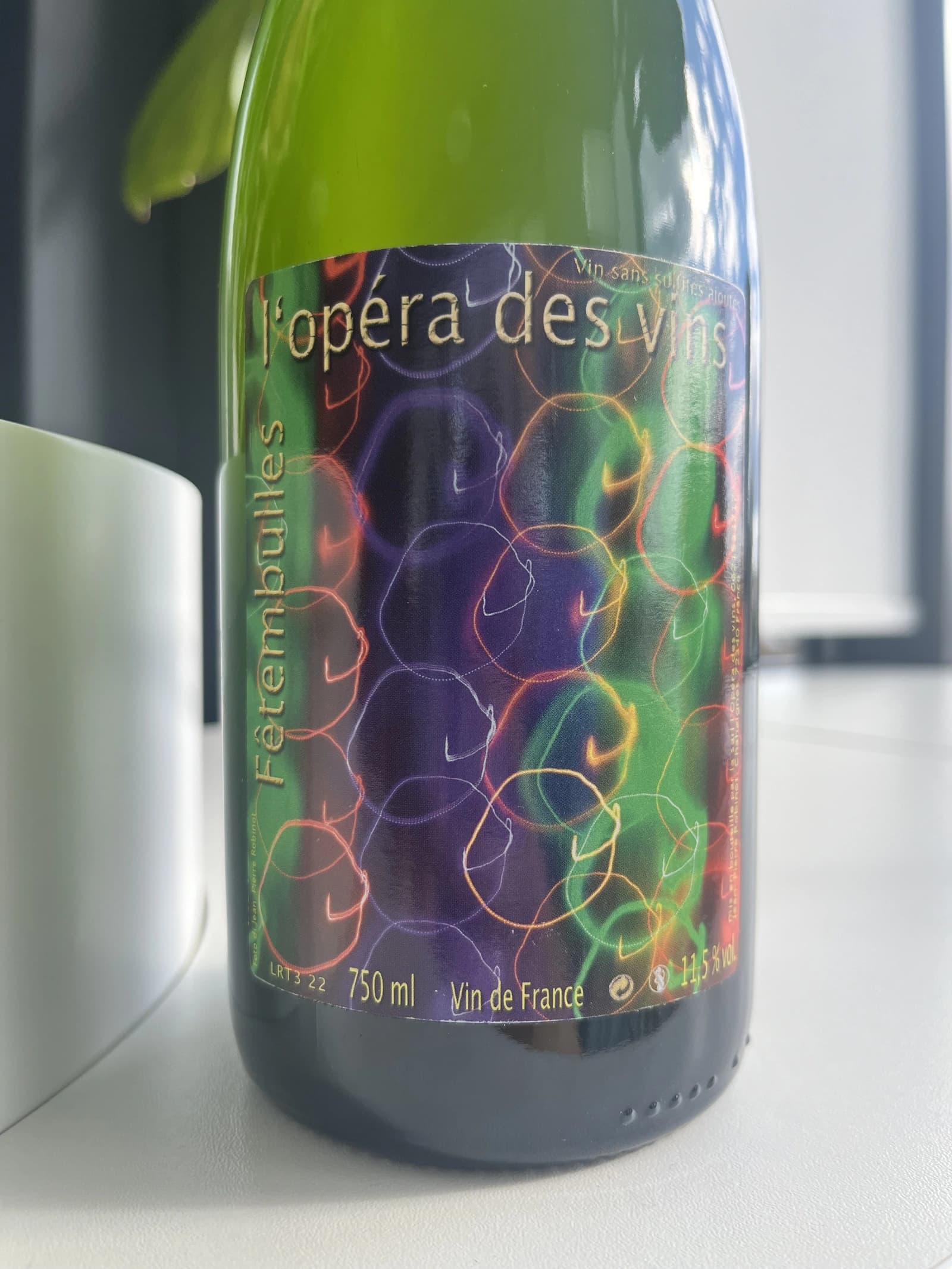
This wine secured the 🏅 6th place in our wine tasting lineup.
Fêtembulles is a petnat made of 100% Chenin Blanc sourced from his youngest vines, around twenty years old. Initial fermentation occurs in stainless steel tanks. According to Tutto Wines, this wine spends around nine months on lees before being disgorged by hand.
Jean-Pierre Robinot l'ange vin Nocturne 2021
- Region
- France » Vin de France
- Type
- red still, dry
- Producer
- Vintage
- 2021
- Grapes
- Pineau d'Aunis
- Alcohol
- 11
- Volume
- 750 mL
- Find at
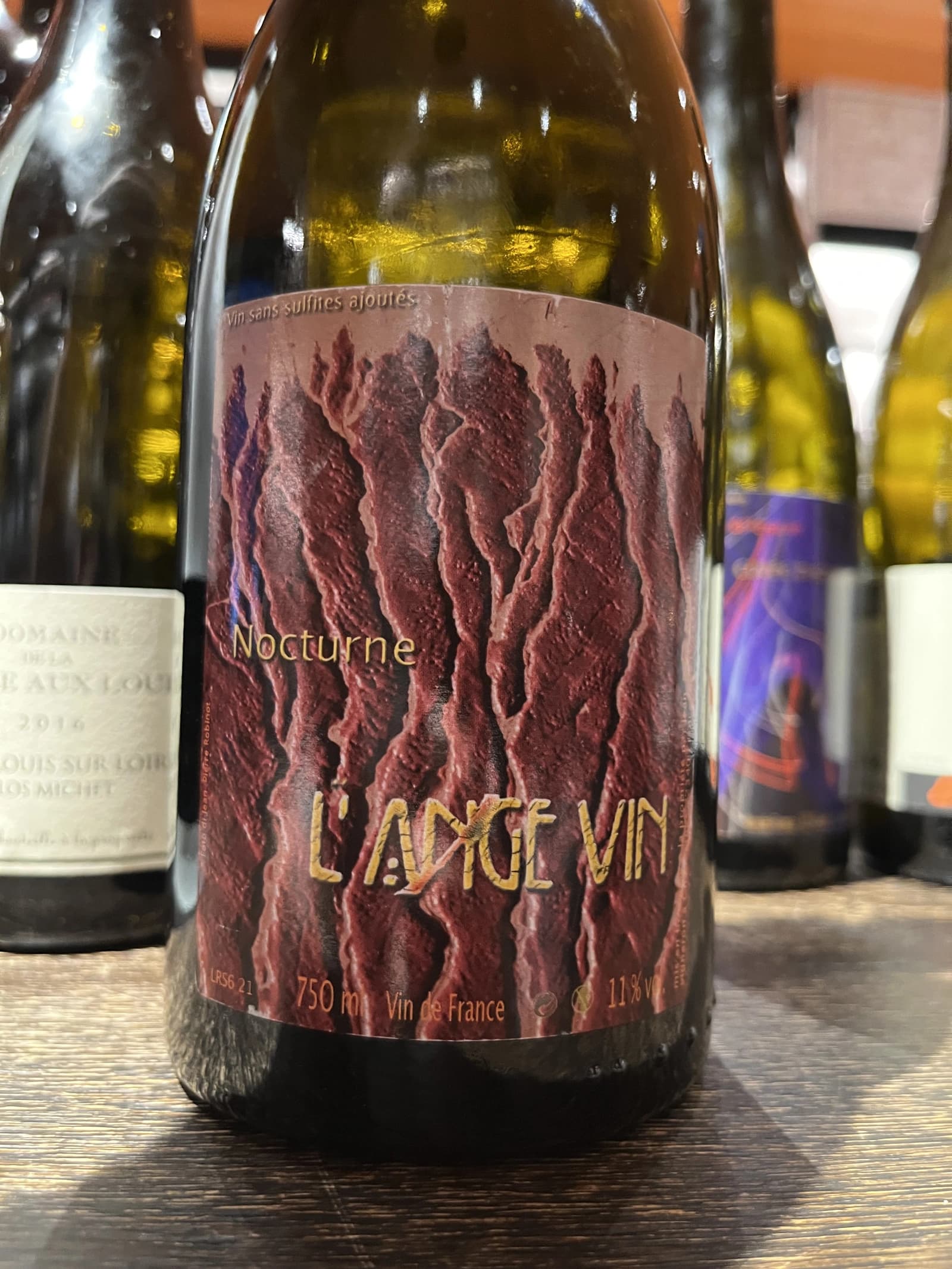
This wine secured the 🏅 7th place in our wine tasting lineup.
Nocturne is 100% Pineau d'Aunis from vineyards of between 80 and 100 years of age. It was fermented on skins with whole bunches for three weeks and aged in old barrels for a year sur lie.
Jean-Pierre Robinot les vignes de l'ange vin le regard 2020
- Region
- France » Vin de France
- Type
- red still, dry
- Producer
- Vintage
- 2020
- Grapes
- Pineau d'Aunis
- Alcohol
- 13
- Volume
- 750 mL

This wine secured the 🏅 8th place in our wine tasting lineup.
Regard is 100% Pineau d'Aunis. According to Zev Rovine, the vineyards are 90+ years old. But according to Tutto Wines the vines are around 30 years old. The grapes are fermented on skins with whole bunches for three weeks and aged in old barrels for 15-18 months (depending on the vintage).
Jean-Pierre Robinot l'opéra des vins lumière de silex 2021
- Region
- France » Vin de France
- Type
- white still, dry
- Producer
- Vintage
- 2021
- Grapes
- Chenin Blanc
- Alcohol
- 12.5
- Volume
- 750 mL
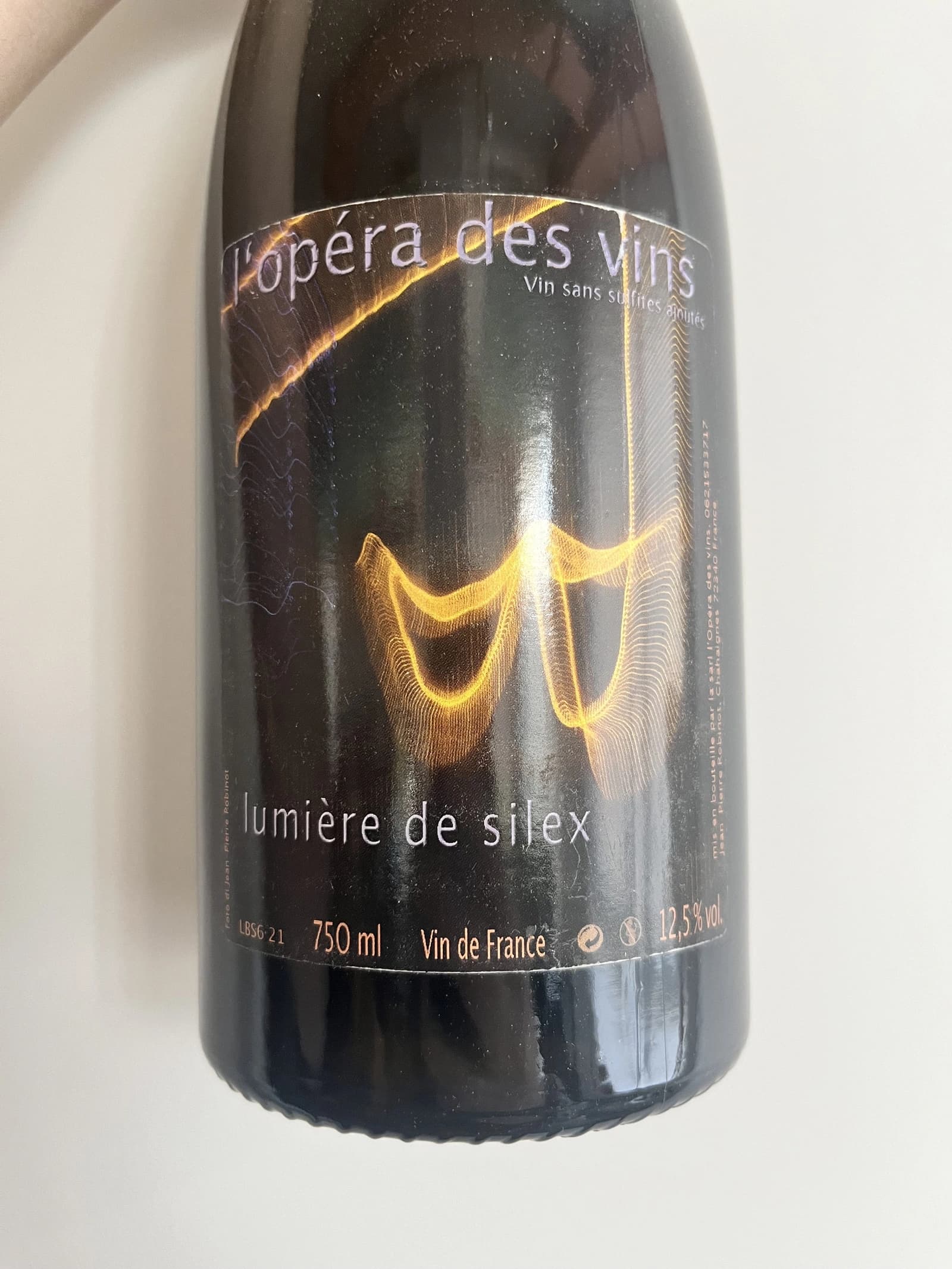
This wine secured the 🏅 4th place in our wine tasting lineup.
Lumière de Silex is 100% Chenin Blanc from up vines that are more than 40 years old. The grapes are pressed directly to barrel, where the wine ferments and ages for unknown period of time.
Jean-Pierre Robinot l'ange vin L'iris 2021
- Region
- France » Vin de France
- Type
- white still, dry
- Producer
- Vintage
- 2021
- Grapes
- Chenin Blanc
- Alcohol
- 12.5
- Volume
- 750 mL

This wine secured the 🥉 3rd place in our wine tasting lineup.
This is a bit funny. According to Zev Rovine, L'iris is made of up to 30-years-old vines. According to Tutto Wines and Zuiver Wijnen, it is actually made from their oldes vines, which are between 60 and 90+ years of age. So go figure. In any case, the wine pressed directly to barrel, where it ferments and then is aged for more than two years (which depends on vintage).
Jean-Pierre Robinot les vignes de l'ange vin cuvée bistrologie 2021
- Region
- France » Vin de France
- Type
- white still, dry
- Producer
- Vintage
- 2021
- Grapes
- Chenin Blanc
- Alcohol
- 12
- Volume
- 750 mL
- Find at
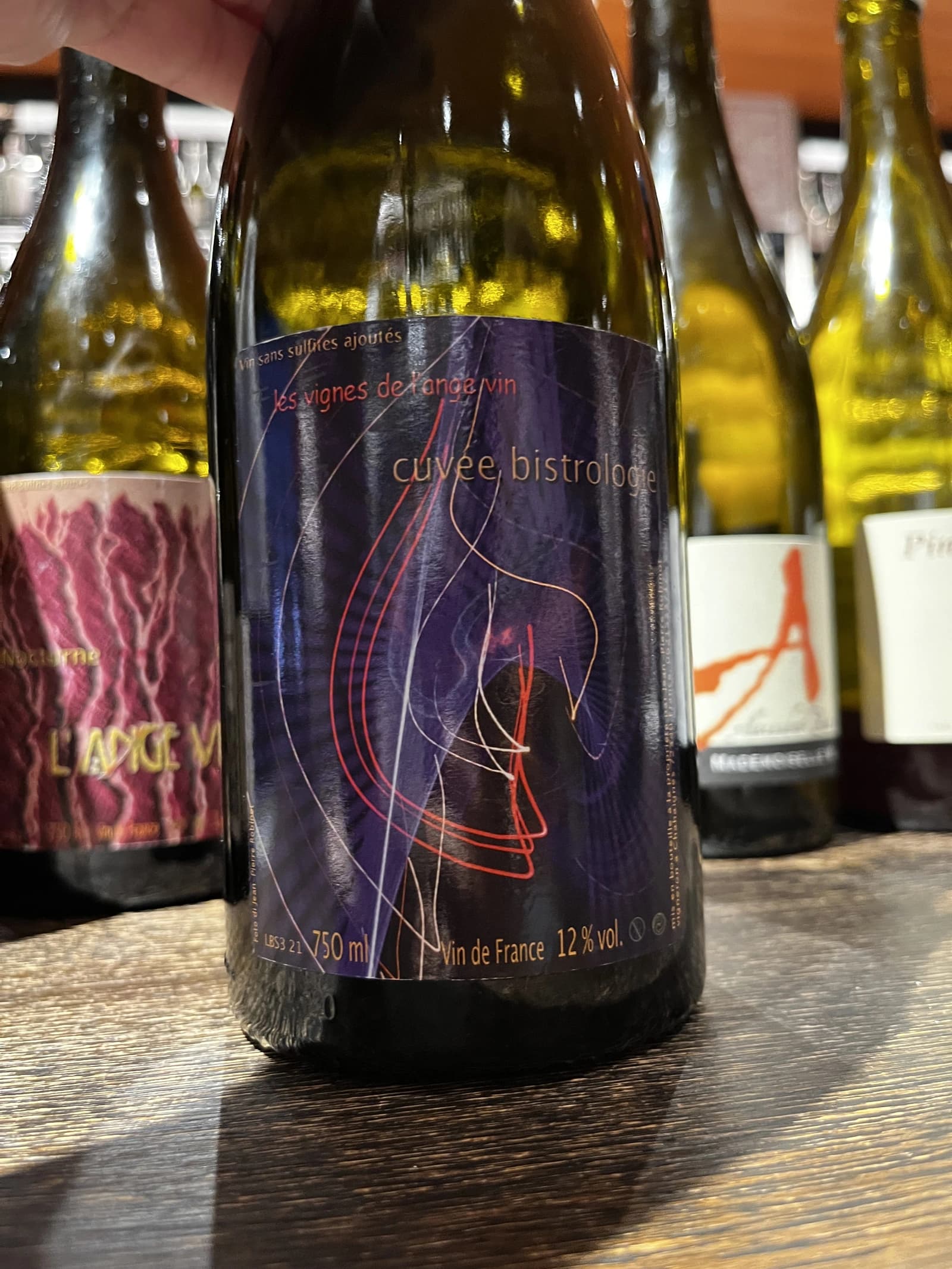
This wine secured the 🥈 2nd place in our wine tasting lineup.
Cuvée Bistrologie is 100% Chenin Blanc from up vines that are around 40 years old. The grapes are pressed directly to barrel, where spontaneous fermentation occurs. Around a year of elévage and then 4 months in a tank.
Jean-Pierre Robinot l'ange vin Super Juliette 2010
- Region
- France » Vin de France
- Type
- white still, dry
- Producer
- Vintage
- 2010
- Grapes
- Chenin Blanc
- Alcohol
- 13.5
- Volume
- 750 mL

This wine secured the 🥇 1st place in our wine tasting lineup.
This cuvée is named after Jean-Pierre's daughter. Juliette is 100% Chenin Blanc coming from… Well, again different sources name different age. Some say that the vines are ungrafted and over a century old; while Zev Rovine insists that the vines are around 40-yeard-old. In any case, the wine is made only in the best vintages. The grapes are usually harvested late with botrytis, pressed directly to barrel and fermented dry. More than 8 years of élevage! This must be a true reflection of "no rush" mentality. According to Zuiver Wijnen, the barrel note wrote: "best of the best".
Jean-Pierre Robinot l'opéra des vins les années folles 2022
- Region
- France » Vin de France
- Type
- rose ancestral sparkling, brut nature
- Producer
- Vintage
- 2022
- Grapes
- Pineau d'Aunis
- Alcohol
- 10
- Volume
- 750 mL
- Find at
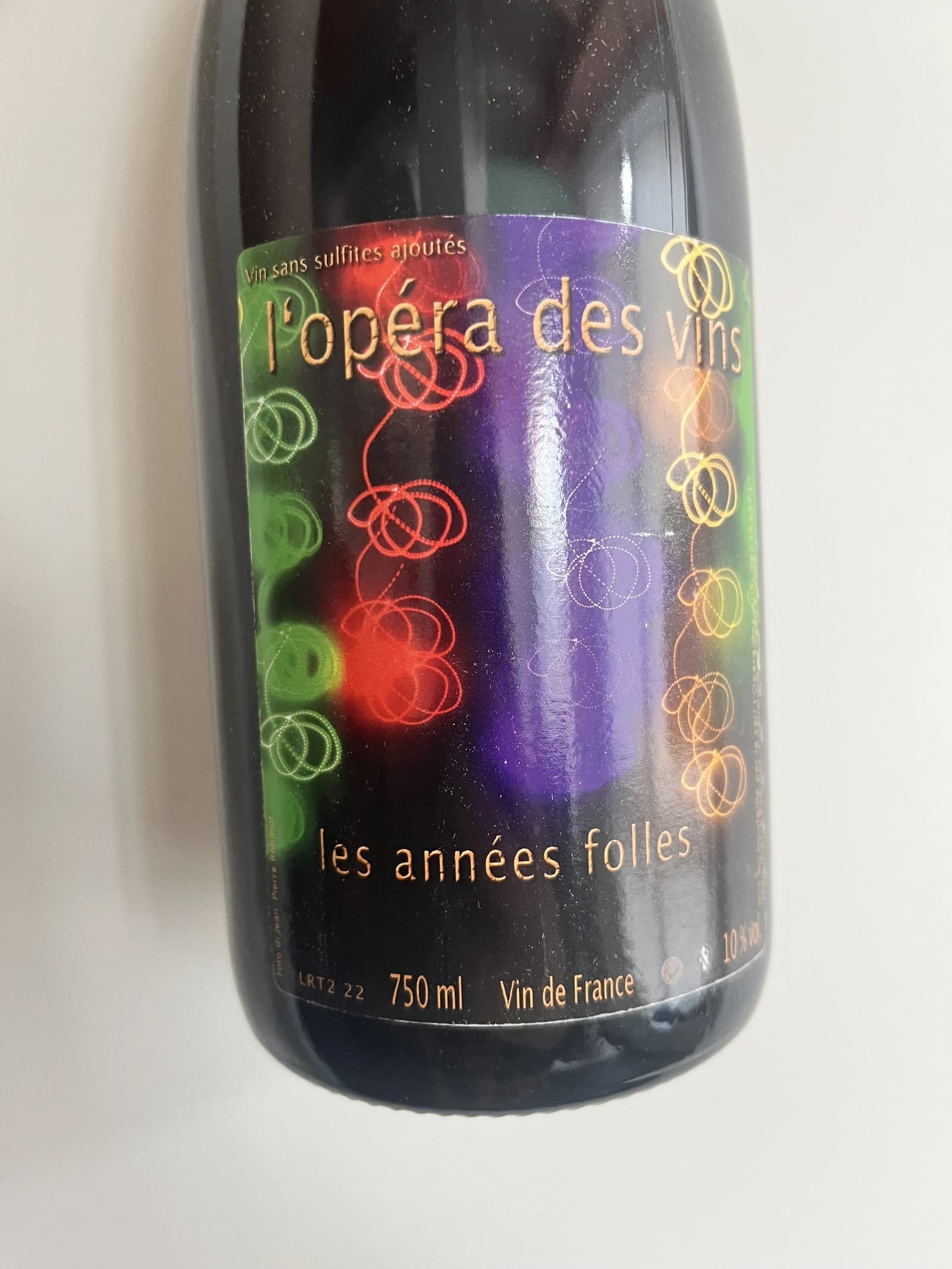
This wine secured the 🏅 5th place in our wine tasting lineup.
Les Années Folles is another petnat, but made of Pineau d'Aunis. The age of the wines is not clear, but according to Zev Rovine, the grapes are sourced from up to 30-year-old plants. Initial fermentation occurs in barrels. This wine spends around a year on lees before being disgorged by hand.
Resources
- Natural Wines With Clovis (Episode 3) like F*ck That's Delicious!. Irish Baklava Fan.
- Portraits of winemakers / J-P ROBINOTNOT. Staro Bros and Zev Rovine selections.
- Jean-Pierre Robinot. More Natural Wine.
- Robinot. Tutto Wines.
- Jean-Pierre Robinot. Marée Haute.
- Domaine de L'ange Vin. Zev Rovine selections.